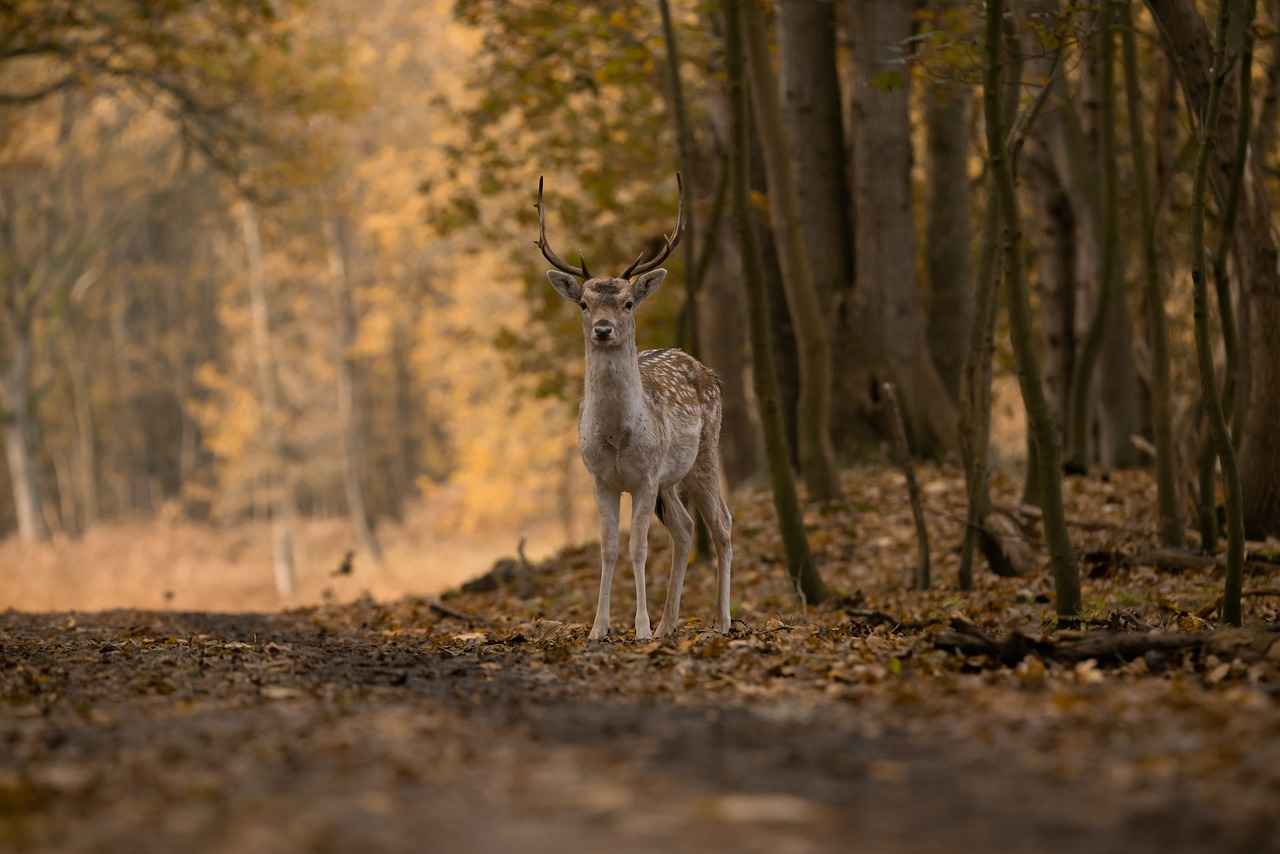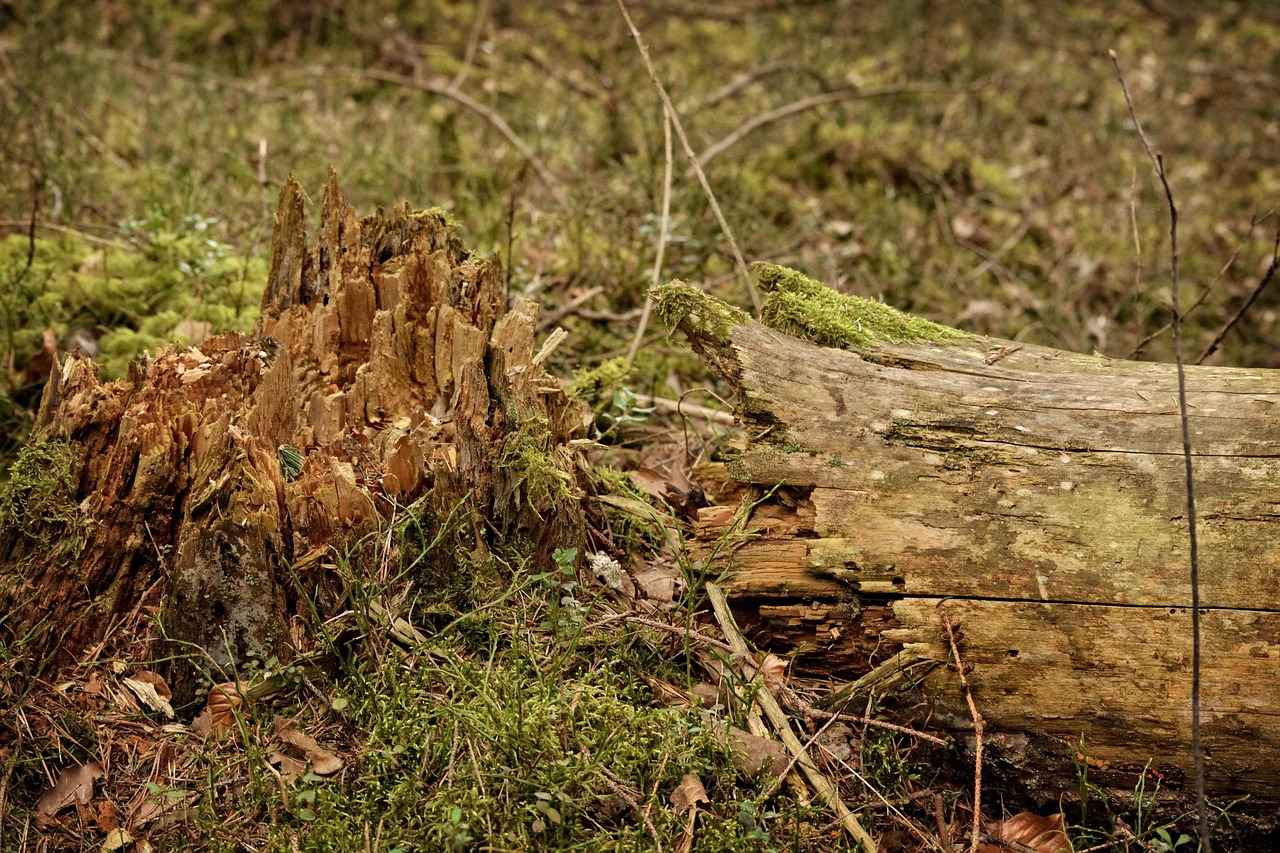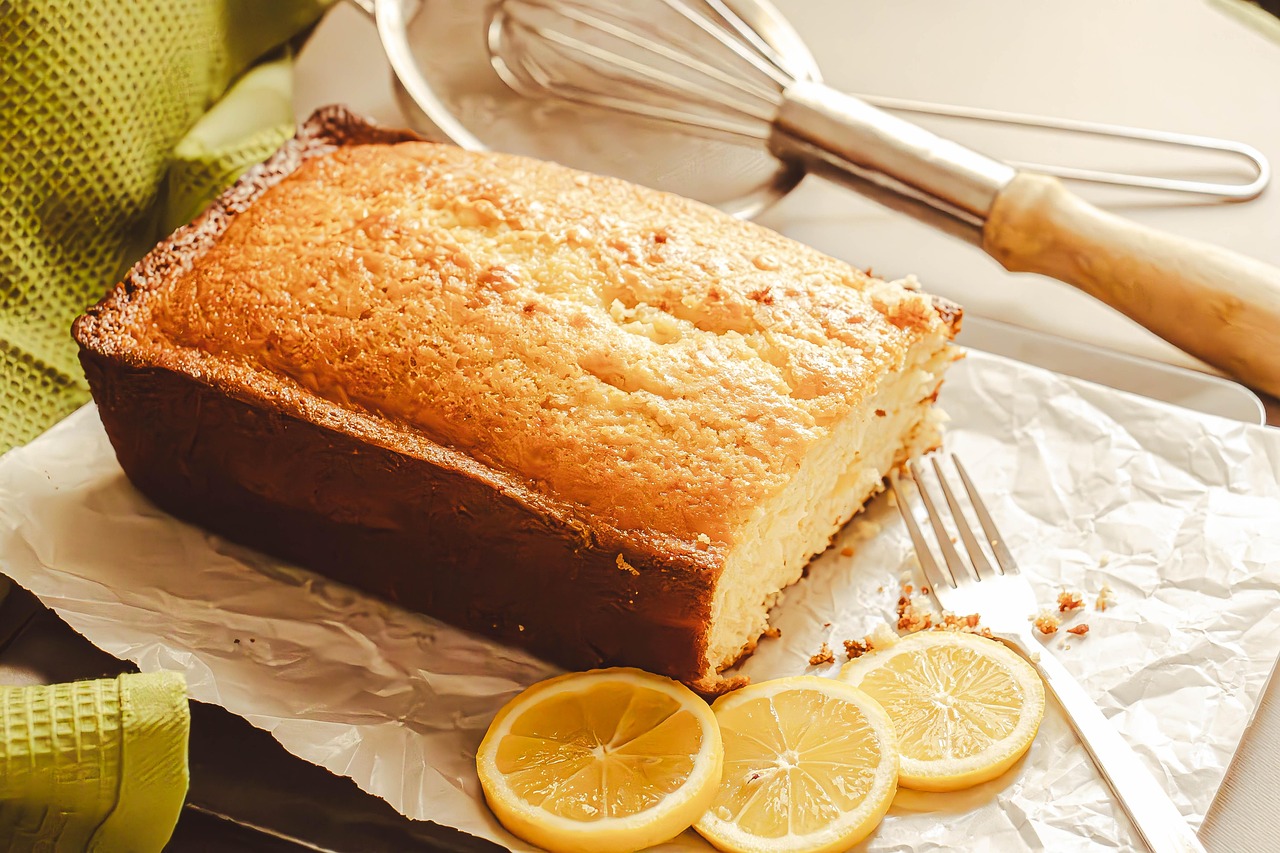This article serves as a comprehensive guide on the process of dehydrating deer jerky at 160°F. We will delve into the essential steps, tips, and considerations that ensure a delicious and safe outcome. Understanding the nuances of jerky preparation can significantly enhance your culinary experience.
When it comes to dehydrating jerky, temperature control is crucial. The ideal temperature for dehydrating jerky is typically around 160°F. This temperature helps to effectively reduce pathogens while preserving the meat’s natural flavors. It is important to maintain this temperature consistently throughout the drying process to ensure safety and quality.
Choosing 160°F for dehydrating deer jerky is beneficial for several reasons. Firstly, this temperature is effective in reducing harmful bacteria that may be present in the meat. Secondly, it helps achieve an optimal texture by allowing moisture to evaporate without compromising the flavor. The result is a jerky that is both safe to eat and enjoyable to chew.
The texture of jerky is influenced significantly by the dehydration temperature. At 160°F, the jerky maintains a chewy consistency without becoming overly dry. This balance is essential for a satisfying eating experience. Higher temperatures may lead to a tougher texture, while lower temperatures can result in a rubbery product.
Dehydrating jerky at lower temperatures poses several risks. Insufficient heat can lead to undercooked meat, increasing the chance of foodborne illnesses. It is vital to adhere to recommended temperatures to ensure the meat is adequately dried and safe for consumption.
Conversely, using higher temperatures can alter the flavor and texture of the jerky. While it may dry faster, the resulting product can be overly tough and less palatable. Therefore, sticking to 160°F is advisable for achieving the best results.
Timing plays a critical role in the jerky-making process. Generally, dehydrating deer jerky at 160°F takes between 4 to 6 hours. However, several factors can influence this time, including the thickness of the meat and the humidity levels in your environment.
- Meat Thickness: Thicker slices will require more time to dehydrate.
- Humidity: High humidity can prolong drying time.
- Air Circulation: Proper airflow enhances the drying process.
To determine if your jerky is done, use the bend test. The jerky should bend without breaking, and when you tear it, it should have a slight moisture but not be wet. This ensures that it is properly dehydrated and safe to eat.
Having the right tools can streamline the jerky-making process. Essential equipment includes:
- Dehydrator: A dedicated food dehydrator is ideal for consistent results.
- Sharp Knife: For slicing the meat into uniform pieces.
- Marinating Containers: To soak the meat in your chosen marinade.
When selecting a dehydrator, look for one with adjustable temperature settings and good airflow. This ensures even drying and optimal flavor retention.
While dehydrators are popular, you can also use an oven or air drying methods. Each technique has its benefits, but maintaining the right temperature is crucial for safety and quality.
Flavoring your jerky is key to enhancing its taste. Consider using a variety of marinades that include ingredients like soy sauce, garlic powder, and black pepper. Experimenting with different flavors can lead to a unique and satisfying jerky experience.
Popular marinades often include a mix of soy sauce, Worcestershire sauce, and spices to complement the natural flavor of the deer meat. Letting the meat marinate for several hours or overnight can intensify the flavor.
Proper storage is essential for maintaining the freshness of your jerky. Store it in airtight containers or vacuum-sealed bags in a cool, dry place. This will help prolong its shelf life while keeping the flavor intact.

What is the Ideal Temperature for Dehydrating Jerky?
When it comes to making jerky, understanding the ideal temperature for dehydrating jerky is essential for both food safety and the overall quality of the final product. The process of dehydration not only removes moisture but also helps in preserving the meat while enhancing its flavor. This section dives deeper into the science behind temperature control during jerky preparation, ensuring that your homemade jerky is both delicious and safe.
The USDA recommends a minimum temperature of 160°F for dehydrating jerky. At this temperature, harmful bacteria, such as Salmonella and E. coli, are effectively killed, reducing the risk of foodborne illness. The importance of maintaining this temperature cannot be overstated, as it serves as a crucial barrier against pathogens that thrive in meat products. By adhering to this guideline, you ensure that your jerky is not only tasty but also safe to consume.
In addition to safety, temperature plays a significant role in determining the texture and flavor of the jerky. Dehydrating at the recommended temperature allows for the right balance of moisture retention and chewiness. If the temperature is too low, the jerky may remain moist and chewy, which can lead to spoilage. Conversely, if the temperature is too high, the jerky may become overly dry and tough, compromising the eating experience.
Moreover, the dehydration process is influenced by various factors, including the thickness of the meat slices and the humidity of the environment. Thicker slices require longer drying times, while high humidity can prolong the dehydration process. Therefore, it is essential to monitor the jerky closely, making adjustments as necessary to ensure optimal results.
Another important aspect to consider is the even distribution of heat. Using a dehydrator with a fan can help circulate warm air, ensuring that all pieces of jerky dry uniformly. This not only enhances the texture but also contributes to consistent flavor throughout the batch.
In summary, understanding the ideal temperature for dehydrating jerky is vital for achieving a safe, flavorful, and enjoyable product. By following the recommended temperature guidelines and considering factors such as meat thickness and humidity, you can create jerky that is both safe to eat and delicious. So, as you embark on your jerky-making journey, remember that temperature control is key to your success.

Why Choose 160°F for Dehydrating Deer Jerky?
When it comes to making delicious and safe deer jerky, temperature control is paramount. One of the most recommended temperatures for dehydrating deer jerky is 160°F. This temperature strikes a perfect balance between ensuring flavor and maintaining safety. In this section, we will explore the numerous benefits of dehydrating deer jerky at this specific temperature, focusing on pathogen reduction and achieving optimal texture.
Dehydrating deer jerky at 160°F is essential for several reasons, particularly concerning food safety and texture.
- Pathogen Reduction: At 160°F, the heat is sufficient to kill harmful bacteria, including Salmonella and E. coli. This is crucial as these pathogens can thrive in meat if not cooked or dehydrated properly. Ensuring that the internal temperature of the meat reaches this level not only makes the jerky safe to consume but also helps in extending its shelf life.
- Optimal Texture: Dehydrating at this temperature allows the moisture to evaporate effectively while preventing the meat from becoming too tough. The result is a jerky that has the perfect chewiness and flavor profile. If the temperature is too low, the jerky may remain moist and spoil quickly; if too high, it can become overly dry and hard, leading to a less enjoyable eating experience.
Moreover, the flavor development during the dehydration process is enhanced at 160°F. The heat helps to meld the spices and marinades into the meat, creating a more flavorful product. This is particularly important for deer jerky, where the natural flavors of the meat can be complemented by seasonings.
The texture of jerky is a critical aspect that can significantly impact the overall eating experience. When dehydrating at 160°F, the meat retains a desirable moisture content, which contributes to its chewiness. This level of heat ensures that the jerky is neither too soft nor too dry, providing a satisfying bite.
Dehydrating jerky at lower temperatures can pose risks. Not only can it lead to undercooked meat, but it can also create an environment conducive to bacterial growth. This makes it essential to adhere to the recommended temperature of 160°F to ensure that your jerky is safe to eat.
While it might seem logical to dehydrate jerky at higher temperatures for quicker results, this can adversely affect the flavor and texture. Jerky made at excessively high temperatures may end up being overcooked and dry, resulting in a product that lacks the juicy, tender qualities that are characteristic of well-made jerky.
Safety should always be a priority when preparing jerky. Following the guidelines for dehydrating at 160°F not only ensures a delicious product but also protects against foodborne illnesses. It is advisable to use a food thermometer to verify that the meat has reached the necessary internal temperature before consuming.
In summary, choosing 160°F for dehydrating deer jerky is a decision rooted in both flavor and safety. This temperature not only helps in effectively killing pathogens but also guarantees a texture that is both enjoyable and satisfying. By adhering to this guideline, you can ensure that your homemade deer jerky is a delicious and safe treat.
How Does Temperature Affect Jerky Texture?
The texture of jerky plays a crucial role in the overall eating experience. When it comes to dehydrating deer jerky, the temperature at which you dehydrate your meat has a significant impact on its final texture, chewiness, and moisture levels. Understanding how temperature variations affect these characteristics can help you achieve the ideal jerky that is both flavorful and satisfying.
The chewiness of jerky is largely determined by the moisture content retained during the dehydration process. At lower temperatures, the moisture may not evaporate adequately, resulting in jerky that is too soft and lacks the desired firmness. This can lead to a texture that feels more like cooked meat rather than the dry, chewy consistency that jerky enthusiasts expect.
On the other hand, dehydrating jerky at higher temperatures can create a different set of challenges. While it may expedite the drying process, excessive heat can cause the outer layer of the meat to dry too quickly, forming a tough exterior while leaving the inside undercooked. This inconsistency can lead to an unappealing texture that detracts from the overall eating experience. Furthermore, high temperatures can also negatively affect the flavor, making it less enjoyable.
To achieve the perfect jerky texture, it is essential to find a balance between temperature and time. Dehydrating at a moderate temperature, such as 160°F, allows for even drying throughout the meat without sacrificing chewiness or moisture. This temperature effectively reduces pathogens while maintaining an ideal texture that is both chewy and flavorful.
The moisture level in jerky is another critical factor that influences its texture. Jerky that retains some moisture will be more tender and easier to chew, while jerky that is overly dry can become brittle and hard to consume. Striking the right moisture balance is essential for creating a satisfying product. During the dehydration process, monitoring the jerky’s texture can help you determine when it has reached the desired level of chewiness.
- Use a Reliable Dehydrator: Invest in a quality dehydrator that allows for precise temperature control.
- Cut Meat Evenly: Ensure uniform thickness in your meat slices to promote even drying.
- Monitor Drying Time: Keep an eye on the jerky as it dehydrates, checking for doneness regularly.
- Experiment with Marinades: Certain marinades can help retain moisture, enhancing the final texture.
In conclusion, the temperature at which you dehydrate your jerky plays a vital role in determining its texture. By understanding the effects of different temperatures on chewiness and moisture levels, you can create a jerky that is both delicious and enjoyable. Whether you prefer a tender bite or a more traditional chewy texture, mastering the art of temperature control is key to crafting the perfect deer jerky.
What Happens at Lower Temperatures?
When it comes to dehydrating jerky, maintaining the right temperature is crucial for both safety and quality. Dehydrating at lower temperatures may seem tempting, especially for those looking to preserve more moisture or flavor, but it poses significant risks that cannot be overlooked.
Dehydrating jerky at temperatures below the recommended level of 160°F can lead to undercooked meat, which increases the risk of foodborne illnesses. Bacteria such as Salmonella and E. coli thrive in environments that do not reach sufficient heat. When the meat is not adequately dried, these harmful pathogens can survive, making your jerky unsafe to consume.
Heat plays a vital role in the dehydration process. At 160°F, the meat’s surface temperature reaches a point where bacteria are effectively killed. If the temperature is lower, the drying process may not eliminate these pathogens, resulting in a product that looks dry but is actually harboring dangerous bacteria.
- Texture: Jerky that feels soft or tacky is often a sign that it has not been dehydrated properly.
- Odor: A sour or off smell can indicate spoilage.
- Color: Uneven coloring or dark patches can suggest that the meat has not been dried evenly.
To avoid the pitfalls of low-temperature dehydration, follow these best practices:
- Preheat Your Dehydrator: Always preheat your dehydrator to the desired temperature before placing the meat inside.
- Use a Food Thermometer: Check the internal temperature of the jerky to ensure it has reached at least 160°F.
- Monitor Drying Time: Keep track of how long your jerky has been dehydrating and check for doneness regularly.
Inadequate dehydration can lead to spoilage, resulting in wasted time, effort, and resources. Additionally, consuming undercooked jerky can lead to serious health issues, including gastrointestinal distress and food poisoning. Therefore, it is essential to prioritize food safety by adhering to recommended temperatures.
If you are concerned about achieving the right temperature for dehydration, consider using methods like:
- Oven Drying: This method allows for better temperature control and can be adjusted easily.
- Air Drying: While less common, this method can be effective in dry climates, provided the meat is thinly sliced.
In summary, while dehydrating jerky at lower temperatures might seem like a viable option, the risks far outweigh the benefits. Always aim for the recommended temperature to ensure that your jerky is both delicious and safe to eat.
What About Higher Temperatures?
When it comes to dehydrating deer jerky, temperature plays a critical role in determining the final product’s flavor and texture. While many enthusiasts may be tempted to increase the heat beyond 160°F in hopes of speeding up the process, this approach can lead to several undesirable outcomes. In this section, we will explore the drawbacks of dehydrating jerky at higher temperatures.
Firstly, one of the most significant concerns with using temperatures above 160°F is the potential for overcooking. At elevated temperatures, the meat can lose its natural moisture too quickly, resulting in jerky that is overly dry and tough. Instead of achieving that perfect chewy texture that jerky is known for, you may end up with a product that is difficult to eat and lacks the satisfying bite.
Moreover, higher temperatures can also compromise the jerky’s flavor profile. The Maillard reaction, which is responsible for the browning and flavor development in cooked meats, occurs at specific temperature ranges. When the heat is too high, it can lead to a burnt or bitter taste, overshadowing the carefully selected spices and marinades used in the preparation. This can be particularly disappointing for those who have invested time in crafting a unique flavor blend.
Another important factor to consider is food safety. While it might seem that higher temperatures would eliminate bacteria more effectively, this is not always the case. Dehydrating at temperatures above 160°F can lead to uneven drying, creating pockets of moisture where bacteria can thrive. This can ultimately result in a product that is not only unpalatable but also unsafe to consume.
Additionally, using higher temperatures can negatively impact the jerky’s nutritional value. Excessive heat can break down essential nutrients, such as proteins and vitamins, diminishing the health benefits of the jerky. For those looking to enjoy a nutritious snack, this is a crucial consideration.
To summarize, while the allure of faster drying times at higher temperatures may be tempting, the risks associated with this method far outweigh the benefits. Sticking to the recommended temperature of 160°F ensures that your deer jerky will be flavorful, safe, and enjoyable. By understanding the importance of temperature control in the dehydration process, you can achieve a better end product that meets your expectations.
| Temperature Range | Potential Issues |
|---|---|
| Above 160°F |
|
| 160°F |
|
In conclusion, maintaining a consistent temperature of 160°F is essential for producing high-quality deer jerky that is both delicious and safe. Avoid the temptation to crank up the heat, and instead, focus on perfecting your technique at the right temperature for the best results.
What Are the Safety Guidelines for Dehydrating Jerky?
When it comes to preparing deer jerky, food safety is of utmost importance. Ensuring that your jerky is safe to eat not only protects your health but also enhances the overall quality of your finished product. This section provides a comprehensive overview of the essential safety guidelines you should follow when dehydrating jerky.
- Choose Fresh Meat: Always start with fresh, high-quality deer meat. The fresher the meat, the less chance there is for bacteria to thrive.
- Cleanliness is Key: Maintain a clean workspace. Wash your hands, utensils, and surfaces thoroughly before and after handling meat to prevent cross-contamination.
- Use Proper Marinades: If you are marinating your deer meat, ensure that the marinade is acidic enough to inhibit bacterial growth. Ingredients like vinegar or citrus juices can be effective.
- Temperature Control: Dehydrate your jerky at a consistent temperature of 160°F (71°C). This temperature is crucial for killing harmful bacteria, such as Salmonella and E. coli, which can be present in raw meat.
- Monitor Drying Time: The drying process should not be rushed. Follow recommended drying times based on the thickness of the meat and the dehydrator used to ensure that the jerky is adequately dried.
- Check for Doneness: To ensure safety, check that the jerky is dry and has a leathery texture. It should not be sticky or moist. A good test is to bend a piece; it should crack but not break.
- Store Properly: After dehydration, store your jerky in airtight containers or vacuum-sealed bags. Keep it in a cool, dark place to prolong its shelf life.
- Label and Date: Always label your jerky with the date it was made. This helps you keep track of freshness and ensures you consume it within a safe timeframe.
By adhering to these guidelines, you can enjoy delicious, homemade deer jerky while minimizing health risks. Remember, proper preparation and handling are key to creating a safe and enjoyable snack.
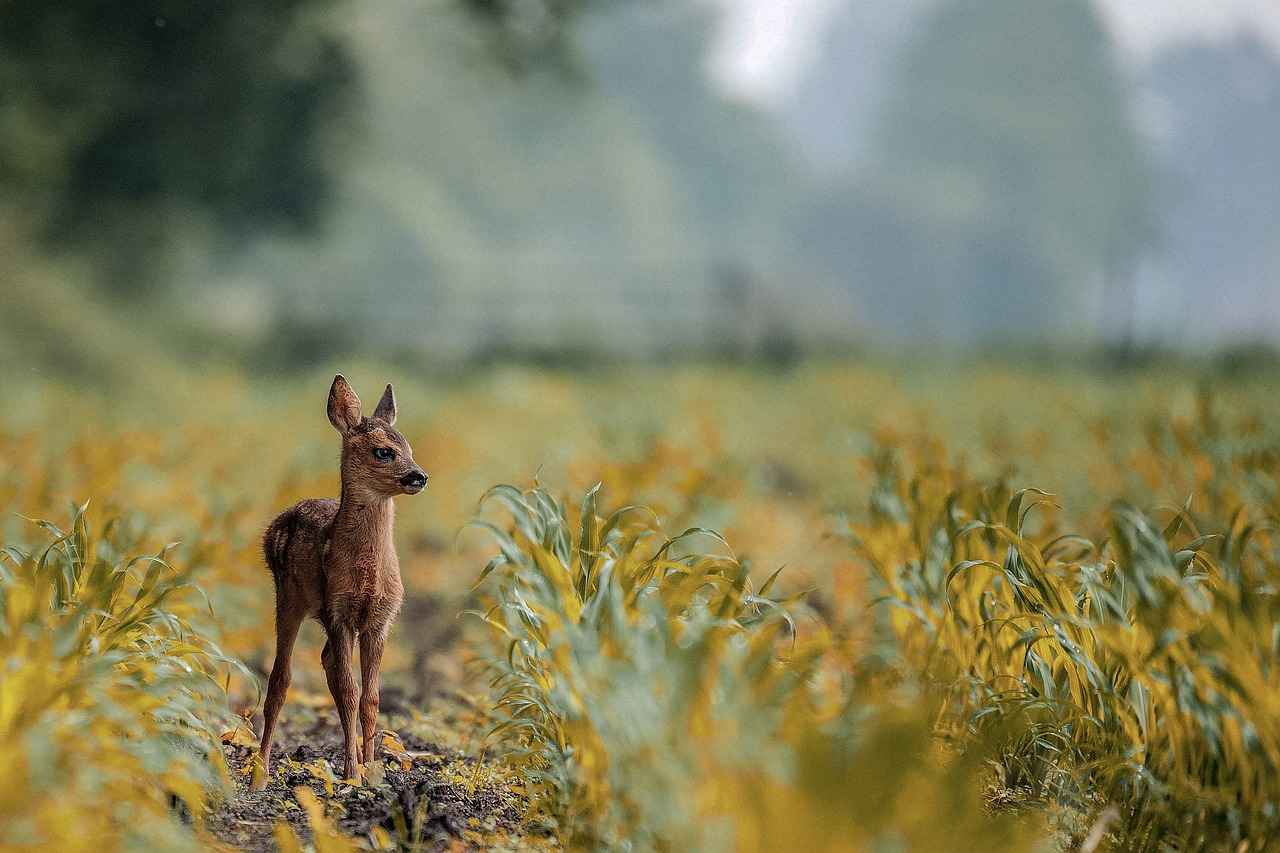
How Long Should You Dehydrate Deer Jerky at 160°F?
When it comes to making delicious deer jerky, timing is everything. The drying process is crucial for achieving the right texture and flavor, while also ensuring food safety. This section will provide you with a detailed timeline for dehydrating deer jerky at 160°F, along with various factors that can affect the drying time.
Typically, the dehydration process at 160°F can take anywhere from 4 to 6 hours. However, the exact duration may vary based on several factors:
- Meat Thickness: The thickness of the meat slices is one of the most significant factors influencing drying time. Thicker slices will require more time to dehydrate completely, while thinner slices will dry faster.
- Humidity Levels: The moisture content in the air can also affect drying time. In high humidity conditions, the jerky may take longer to dry as the air is already saturated with moisture.
- Air Circulation: Proper air circulation is essential for even drying. If the dehydrator is overcrowded or lacks adequate airflow, it can lead to uneven drying and extend the overall time needed.
To ensure your jerky reaches the right level of doneness, it’s essential to monitor the drying process closely. The jerky is done when it is dry to the touch, has a leathery texture, and can be bent without breaking. A good method to check for doneness is to take a piece and bend it; if it cracks but does not break, it’s ready. Additionally, using a food thermometer can help confirm that the jerky has reached a safe internal temperature.
While the general guideline is to dehydrate at 160°F for 4 to 6 hours, always keep an eye on your jerky. Factors such as the specific dehydrator model and the cut of meat can lead to variations in drying times. Therefore, it’s wise to start checking for doneness around the 4-hour mark.
In summary, achieving the perfect deer jerky at 160°F requires careful attention to timing and environmental factors. By understanding how these elements interact, you can create a delicious and safe product that is sure to impress.
What Factors Influence Dehydration Time?
When it comes to dehydrating deer jerky, understanding the various factors that influence the dehydration time is crucial for achieving the perfect texture and flavor. Several key variables can significantly impact how long it takes to dehydrate jerky. This section will delve into these factors, including meat thickness, humidity, and air circulation, which all play a vital role in the drying process.
The thickness of the meat slices is one of the most important factors in determining dehydration time. Thicker cuts will naturally require a longer drying period compared to thinner slices. For optimal results, it is recommended to slice the meat to a consistent thickness of about 1/4 inch. This uniformity ensures even drying and helps prevent the risk of undercooked sections, which can harbor harmful bacteria.
Humidity levels in the environment can also greatly influence the dehydration process. High humidity can slow down the drying time, as the moisture in the air makes it harder for the dehydrator to remove moisture from the meat. Conversely, in a low-humidity environment, jerky may dry more quickly. It is advisable to monitor the humidity levels and adjust the drying time accordingly. If you live in a humid area, you may need to extend the dehydration time by an hour or two.
Air circulation is another critical factor that affects how quickly jerky dries. Proper airflow allows moisture to escape from the meat, facilitating a more efficient drying process. If the dehydrator is overcrowded or the meat is stacked too closely together, air circulation can be compromised, leading to uneven drying and longer times. To ensure optimal airflow, arrange the meat slices in a single layer with enough space between them. This will not only speed up the drying time but will also contribute to a more consistent texture throughout the jerky.
The temperature at which you dehydrate your jerky also has a significant impact on drying time. Dehydrating at a consistent temperature of 160°F is recommended for both safety and quality. At this temperature, moisture is effectively removed while also ensuring that any potential pathogens are eliminated. If the temperature is set lower, the drying process may take longer, and there is a risk of not reaching the necessary heat levels to ensure food safety.
Yes, there are several additional factors that can influence dehydration time. For instance, the type of meat used can affect how quickly it dries. Leaner cuts tend to dehydrate faster than fatty cuts due to the lower moisture content. Additionally, the initial moisture content of the meat, the dehydrator’s efficiency, and even the altitude at which you are dehydrating can all play roles in determining the overall drying time.
In summary, achieving perfectly dehydrated deer jerky requires careful consideration of various factors, including meat thickness, humidity, air circulation, and temperature. By paying attention to these elements, you can ensure that your jerky is not only delicious but also safe to eat.
How to Check for Doneness?
Knowing when your jerky is done is critical for achieving the perfect texture and flavor. With the right methods, you can ensure that your deer jerky is not only safe to eat but also delicious. This section will explore various techniques to check for doneness, helping you master the art of jerky making.
One of the first steps in checking for doneness is to conduct a visual inspection. Properly dehydrated jerky should have a uniform color, typically a rich brown or reddish hue. Look for:
- No moisture: The surface should appear dry without any visible moisture.
- Consistent color: There should be no dark spots or discoloration, which can indicate uneven drying.
The bend test is a straightforward method to assess doneness. To perform this test:
1. Take a piece of jerky and hold it at both ends.2. Slowly bend the jerky in the middle.3. If it bends and cracks but does not break completely, it is likely done.
If it breaks easily, it may be too dry, while a piece that remains pliable may need more time in the dehydrator.
Another effective method is the taste test. Cut a small piece from the batch and let it cool for a moment. The flavor should be rich and concentrated, with a chewy texture. If the jerky has a raw taste or feels overly moist, it needs further dehydration.
For those who want to be precise, using a food thermometer is an excellent way to check for doneness. The internal temperature of the jerky should reach at least 160°F to ensure safety. Insert the thermometer into the thickest part of the jerky to verify that it has reached the appropriate temperature.
After confirming that your deer jerky is done, proper storage is crucial to maintain its flavor and texture. Store your jerky in airtight containers or vacuum-sealed bags to keep it fresh. A cool, dark place is ideal for prolonging shelf life.
By using these methods to check for doneness, you can ensure that your deer jerky is perfectly dehydrated. With practice and attention to detail, you’ll be able to create jerky that is not only safe to eat but also bursting with flavor.

What Equipment Do You Need for Dehydrating Jerky?
When it comes to making delicious deer jerky, having the right tools is essential for a smooth and efficient process. The equipment you choose can greatly influence the quality and safety of your finished product. This section will review the essential equipment needed for successfully dehydrating deer jerky, ensuring that you have everything at your disposal for a successful jerky-making experience.
- Dehydrator: The most important piece of equipment is a good-quality dehydrator. Look for models with adjustable temperature settings and good air circulation. Some popular types include:
- Convection Dehydrators: These use fans to circulate air, providing even drying.
- Stackable Dehydrators: These are compact and allow for drying multiple trays at once.
- Commercial Dehydrators: For those who plan to make large batches, these offer higher capacity and efficiency.
- Sharp Knife: A sharp knife is crucial for slicing the meat into uniform pieces. Aim for a thickness of about 1/4 inch to ensure even drying.
- Cutting Board: A sturdy cutting board provides a safe surface for slicing your meat. Consider using a non-porous board to avoid cross-contamination.
- Marinating Container: Use a glass or stainless steel container for marinating your deer meat. Avoid plastic containers, as they can absorb odors and flavors.
- Meat Thermometer: A reliable meat thermometer ensures that your jerky reaches the safe internal temperature of 160°F, reducing the risk of foodborne illnesses.
- Storage Bags or Containers: After dehydrating, store your jerky in vacuum-sealed bags or airtight containers to maintain freshness and prevent moisture absorption.
Each tool plays a vital role in the jerky-making process:
- Dehydrator: Ensures consistent drying and prevents spoilage.
- Sharp Knife: Allows for precise cuts, which affects drying time and texture.
- Cutting Board: Provides a hygienic workspace, minimizing contamination risks.
- Marinating Container: Prevents chemical reactions that can occur in plastic.
- Meat Thermometer: Guarantees that the jerky is safe to consume.
- Storage Bags or Containers: Keeps your jerky fresh and flavorful for longer periods.
Yes, you can dehydrate jerky using alternative methods such as:
- Oven Drying: Set your oven to the lowest temperature and prop the door open to allow moisture to escape.
- Air Drying: This method requires a well-ventilated area and may take longer, but it can be effective for smaller batches.
In conclusion, investing in the right equipment is key to making high-quality deer jerky. Each tool serves a specific purpose, contributing to the overall success of your jerky-making venture. With the right setup, you can ensure that your jerky is not only delicious but also safe to eat.
What Type of Dehydrator is Best for Jerky?
When it comes to making jerky, the choice of dehydrator can significantly impact the quality of your final product. Understanding the different types of dehydrators available and their specific features is essential for achieving the best results. In this section, we will explore various dehydrator options, their suitability for jerky-making, and tips for selecting the right one for your needs.
There are several types of dehydrators available on the market, each with its own advantages and disadvantages. Here’s a breakdown of the most common types:
- Convection Dehydrators: These are the most popular choice among jerky makers. They use a fan to circulate hot air evenly, which ensures uniform drying. This type is particularly effective for making jerky as it reduces drying time and prevents uneven textures.
- Stackable Dehydrators: These units consist of multiple trays that stack on top of each other. They are often more affordable and portable but may lack the consistent airflow provided by convection models. Users may need to rotate trays for even drying.
- Commercial Dehydrators: Designed for heavy-duty use, these dehydrators are ideal for those who plan to make large batches of jerky. They offer precise temperature control and superior airflow, making them an excellent investment for serious jerky enthusiasts.
- Oven Dehydrators: While not a dedicated dehydrator, your kitchen oven can be used to make jerky. However, it requires careful monitoring of temperature and airflow. This method may not yield the same quality as a dedicated dehydrator.
When selecting a dehydrator for jerky, consider the following features that can enhance your drying experience:
- Temperature Control: Look for a dehydrator with adjustable temperature settings. For jerky, a range of 145°F to 160°F is ideal for safe drying.
- Airflow Design: Proper airflow is crucial for even drying. Dehydrators with horizontal airflow or multiple fans typically provide better results.
- Tray Material: Choose dehydrators with BPA-free plastic trays or stainless steel. These materials are safer and easier to clean.
- Size and Capacity: Consider how much jerky you plan to make. A larger capacity dehydrator may be necessary for bulk production.
Using a dehydrator specifically designed for jerky making offers several benefits:
- Consistency: A quality dehydrator provides consistent heat and airflow, resulting in uniformly dried jerky.
- Convenience: Dehydrators often come with timers and automatic shut-off features, allowing you to set it and forget it.
- Flavor Preservation: Dehydrators maintain the natural flavors of the meat while concentrating them, leading to a more flavorful jerky.
In conclusion, choosing the right dehydrator is crucial for making high-quality jerky. By considering the type of dehydrator, its features, and the benefits it offers, you can enhance your jerky-making process and achieve delicious results. Whether you are a casual maker or a serious enthusiast, investing in a good dehydrator will pay off in the flavor and texture of your jerky.
Are There Alternative Methods for Dehydrating Jerky?
When it comes to making jerky, many enthusiasts often turn to dehydrators as their go-to method. However, alternative techniques exist that can yield delicious results. In this section, we will explore two popular methods: oven drying and air drying, each offering unique advantages and considerations for the jerky-making process.
Using an oven to dehydrate jerky is a convenient option for those who may not have a dehydrator on hand. The process is relatively straightforward:
- Preheat your oven to a low temperature, ideally around 160°F.
- Prepare your meat by slicing it into thin strips and marinating it as desired.
- Place the meat on a baking sheet lined with parchment paper or a wire rack to allow for proper air circulation.
- Leave the oven door slightly ajar to let moisture escape, which helps in the drying process.
- Check the jerky periodically, and rotate the trays if necessary to ensure even drying.
Oven drying can take anywhere from 4 to 10 hours, depending on the thickness of the meat and the oven’s efficiency. This method is particularly useful for small batches and can be done with minimal investment.
Air drying is one of the oldest methods of preserving meat, and it remains a viable option for making jerky. This method relies on natural airflow to remove moisture. Here’s how to do it:
- Prepare your meat by slicing and marinating it.
- Hang the strips in a well-ventilated area, ideally where temperatures are consistently around 60°F to 70°F.
- Ensure that the meat is not touching and has ample space for air to circulate.
Air drying can take several days, depending on environmental conditions such as humidity and temperature. This method is favored by those who appreciate traditional techniques and want to avoid the use of electricity.
Both oven drying and air drying have their pros and cons. Oven drying is quicker and allows for more control over the drying process, making it ideal for those who want to make jerky in a shorter time frame. On the other hand, air drying offers a more authentic flavor profile and is often preferred by traditionalists.
When deciding which method to use, consider factors such as available equipment, time constraints, and personal preferences regarding flavor and texture. Regardless of the method chosen, the key to successful jerky lies in careful preparation and monitoring throughout the drying process.
In conclusion, while dehydrators are popular, alternative methods like oven drying and air drying provide excellent options for making jerky. Each method has its unique benefits, and the choice ultimately depends on your individual needs and resources.
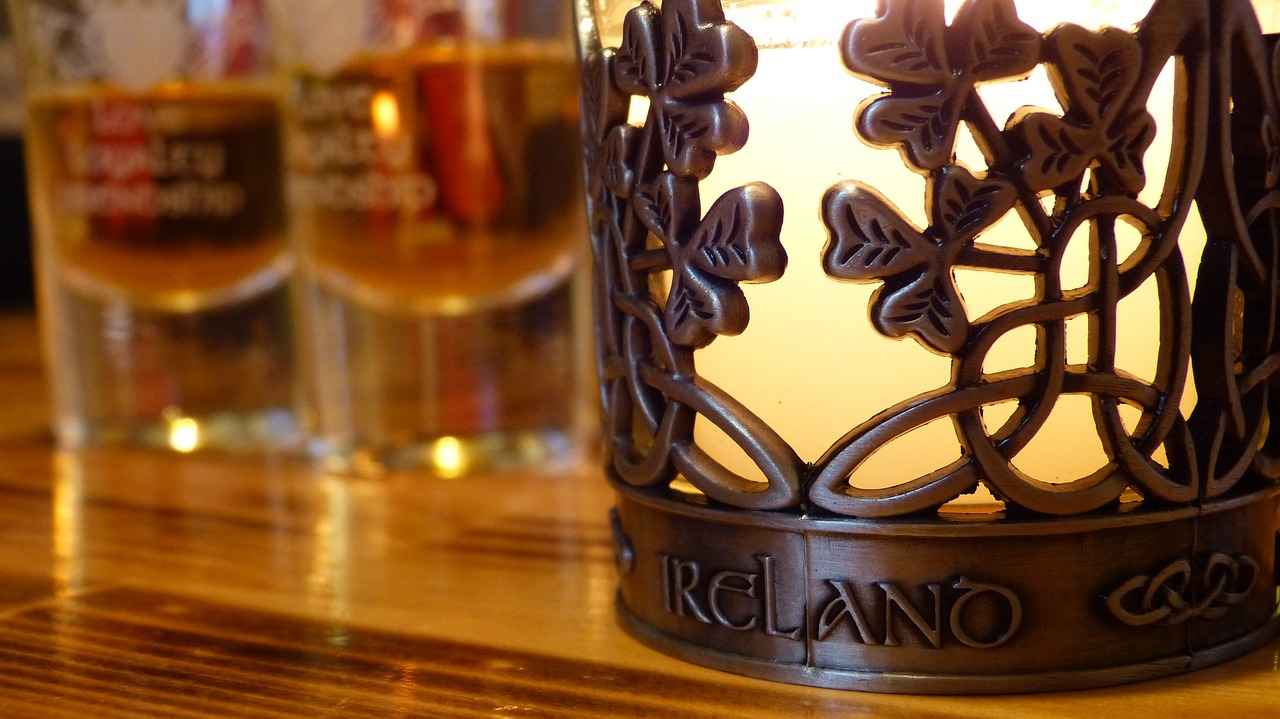
What Are Some Tips for Flavoring Deer Jerky?
Flavoring is key to creating delicious deer jerky that stands out. The right combination of seasonings and marinades can elevate the natural flavors of the meat, providing a unique taste experience that keeps you coming back for more. In this section, we will explore various tips and tricks for seasoning and marinating deer jerky to enhance its taste.
Seasoning not only adds flavor but also helps in preserving the jerky. The right mix of spices and marinades can create a balance that enhances the meat’s natural taste while also ensuring safety during storage. Here are some tips to keep in mind:
- Start Simple: Begin with basic seasonings like salt, pepper, and garlic powder. You can gradually add more complex flavors as you get comfortable.
- Experiment with Marinades: Marinades can infuse deep flavors into the meat. Consider using soy sauce, Worcestershire sauce, or even fruit juices for a sweet and savory blend.
- Use Fresh Ingredients: Fresh herbs and spices can significantly enhance the flavor profile. Consider using ingredients like rosemary, thyme, or even chili flakes for a kick.
Choosing the right marinade is crucial for maximizing flavor. Here are some popular marinades that work exceptionally well with deer meat:
- Teriyaki Marinade: A mix of soy sauce, brown sugar, ginger, and garlic creates a sweet and savory profile.
- Spicy Chipotle Marinade: Combine chipotle peppers in adobo sauce with vinegar and spices for a smoky, spicy flavor.
- Mustard and Honey Marinade: The tanginess of mustard paired with the sweetness of honey creates a unique flavor that complements deer meat.
Marinating is an art that requires time and patience. Here are some guidelines to ensure your jerky is perfectly marinated:
- Timing is Key: Marinate the meat for at least 4-6 hours, but overnight is often best for deeper flavor penetration.
- Use a Vacuum Sealer: For optimal flavor infusion, consider using a vacuum sealer to remove air and allow the marinade to penetrate the meat more effectively.
- Don’t Overcrowd: Ensure that each piece of meat is coated evenly and not overcrowded in the marinade. This allows for even flavor distribution.
Even after dehydrating, there are ways to enhance the flavor of your jerky:
- Season After Drying: Lightly dust the jerky with additional spices or seasoning blends after dehydration for an extra flavor boost.
- Store with Flavor Packs: Consider storing your jerky with flavor-infused packs like bay leaves or dried herbs to enhance the taste over time.
- Try Different Textures: Experiment with different drying times to achieve various textures, which can also influence flavor perception.
In conclusion, flavoring deer jerky is an essential part of the jerky-making process. By using the right seasonings, marinades, and techniques, you can create a product that is not only delicious but also uniquely yours. Remember to experiment and adjust flavors according to your preferences, and enjoy the journey of creating the perfect deer jerky!
What Marinades Work Best for Deer Jerky?
When it comes to creating delicious deer jerky, the right marinade can truly elevate its flavor profile. Marinades not only add zest but also help tenderize the meat, making it more enjoyable to chew. Here, we explore some popular marinades and their key ingredients that complement deer meat effectively.
A good marinade typically includes three essential components: acid, fat, and seasoning. The acid, often in the form of vinegar or citrus juice, helps to break down the meat fibers, while fat adds moisture and richness. Seasonings bring in flavor, making the jerky more appealing. Below are some popular marinades that work exceptionally well with deer meat.
- Teriyaki Marinade: This sweet and savory marinade combines soy sauce, brown sugar, ginger, and garlic. The sweetness of the brown sugar balances the savory flavors, creating a delightful taste.
- Spicy Chipotle Marinade: For those who enjoy a kick, a chipotle marinade made with adobo sauce, lime juice, and cumin adds a smoky heat that beautifully complements the rich flavor of deer meat.
- Garlic and Herb Marinade: A mixture of olive oil, minced garlic, rosemary, and thyme provides a fragrant and earthy flavor. This marinade is perfect for those who prefer a more traditional taste.
- BBQ Marinade: Combining ketchup, Worcestershire sauce, apple cider vinegar, and spices, BBQ marinades offer a tangy and sweet profile that pairs wonderfully with the gamey taste of deer meat.
To prepare your marinade, simply mix the ingredients in a bowl or a resealable plastic bag. Make sure the deer meat is fully submerged in the marinade for optimal flavor absorption. For best results, allow the meat to marinate for at least 4 to 12 hours in the refrigerator. This allows the flavors to penetrate the meat thoroughly, enhancing the overall taste.
- Use Fresh Ingredients: Fresh herbs and spices can significantly enhance the flavor of your marinade. Avoid using old or expired ingredients.
- Balance the Flavors: Ensure a good balance between sweet, salty, and acidic components to create a well-rounded marinade.
- Don’t Over-Marinate: While marinating is essential, overdoing it can lead to mushy meat. Stick to the recommended time for the best texture.
Don’t hesitate to experiment with your marinades! Mixing different spices, herbs, and acids can lead to unique flavor combinations. Keep notes on your experiments to find your perfect blend. Remember, the goal is to enhance the natural flavor of the deer meat while adding your personal touch.
In conclusion, the right marinade can transform your deer jerky into a culinary delight. By understanding the components of effective marinades and experimenting with flavors, you can create a jerky that is not only safe to eat but also bursting with flavor.
How to Store Your Dehydrated Deer Jerky?
When it comes to enjoying your homemade deer jerky, proper storage is essential for maintaining its freshness and flavor. The way you store your jerky can significantly impact its shelf life and the overall taste experience. In this section, we will explore effective methods and tips for storing your dehydrated deer jerky, ensuring that it remains delicious for as long as possible.
Jerky is a dried meat product, and while dehydration helps preserve it, exposure to air, moisture, and light can lead to spoilage. Proper storage not only extends its shelf life but also retains the rich flavors and textures that make jerky enjoyable. By following the right storage practices, you can ensure that your jerky remains safe to eat and delicious.
- Airtight Containers: Using airtight containers is one of the best ways to store your jerky. Glass jars, vacuum-sealed bags, or plastic containers with tight-fitting lids can keep out air and moisture.
- Refrigeration: For longer storage, consider refrigerating your jerky. The cool temperature slows down the growth of bacteria and helps maintain freshness.
- Freezing: If you plan to store your jerky for an extended period, freezing is a great option. Wrap the jerky in freezer paper or vacuum-seal it to prevent freezer burn.
To maintain the best quality of your deer jerky, consider the following tips:
- Cool and Dark Place: Store your jerky in a cool, dark place away from direct sunlight. Heat and light can degrade the quality of the meat.
- Humidity Control: Keep the humidity levels low. Moisture can cause jerky to spoil quickly, so consider adding silica gel packets to your storage containers to absorb excess moisture.
- Labeling: Always label your storage containers with the date of preparation. This helps you keep track of freshness and ensures you consume the jerky while it’s still at its best.
The shelf life of deer jerky depends on the storage method:
- Room Temperature: When stored properly in airtight containers, jerky can last for 1 to 2 months.
- Refrigerated: In the refrigerator, jerky can last up to 6 months.
- Frozen: When frozen, jerky can maintain its quality for up to a year or more.
By implementing these storage techniques, you can enjoy your deer jerky at its best, ensuring that each bite is packed with flavor and freshness. Remember, the key to great jerky is not just in the preparation but also in how you store it.
Frequently Asked Questions
- How long does it take to dehydrate deer jerky at 160°F?
The typical drying time for deer jerky at 160°F ranges from 4 to 6 hours, depending on factors like meat thickness and humidity levels. It’s crucial to check periodically to ensure it reaches the desired texture.
- What is the best way to check if my jerky is done?
A great way to check for doneness is to take a piece of jerky and bend it. If it cracks but doesn’t break, it’s usually good to go. You can also cut a piece in half; it should be dry with no moisture visible.
- Can I dehydrate jerky at a lower temperature?
While you can dehydrate jerky at lower temperatures, it may not be safe. Lower temperatures can lead to insufficient cooking, risking foodborne illnesses. It’s best to stick to 160°F for safety.
- What type of dehydrator is best for making jerky?
A dehydrator with adjustable temperature settings and good air circulation is ideal for jerky. Look for models specifically designed for meat, as they often have features that help achieve the perfect texture.
- How should I store my dehydrated deer jerky?
To keep your jerky fresh, store it in an airtight container or vacuum-sealed bag. Keep it in a cool, dark place, or refrigerate it for longer shelf life. Proper storage can help maintain its flavor and texture.

